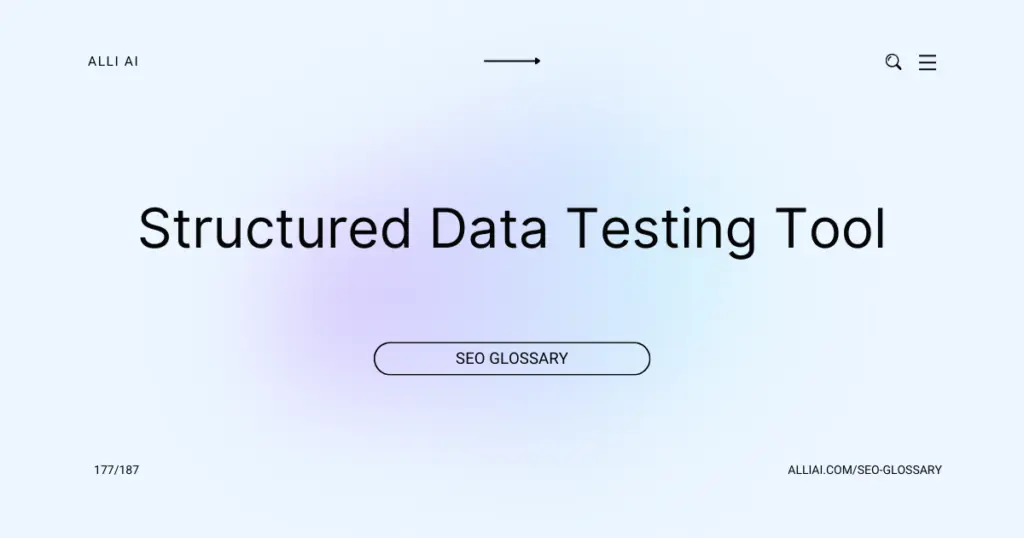What Does Structured Data Testing Tool Mean?
The Structured Data Testing Tool was a service provided by Google that allowed developers and website owners to check if their structured data (a format that provides information about a page and classifies the page content) was implemented correctly. This tool helped in verifying that Google could read and understand the structured data, which is critical for improving how websites appear in search results. However, it’s important to note that Google has replaced this tool with the Rich Results Test, which now serves a similar purpose with more updated features.
Where Does Structured Data Testing Tool Fit Into The Broader SEO Landscape?
Structured Data Testing Tool, previously offered by Google, helps in validating the structured data types implemented on a website, assuring it is correctly formatted and can be understood by search engines. This is crucial for SEO as properly implemented structured data enhances the visibility of a website in search results by enabling rich snippets, which can improve click-through rates (CTRs). Moreover, structured data helps search engines better understand the content of the site, which can contribute to improved relevance and rankings in search results.
Real Life Analogies or Metaphors to Explain Structured Data Testing Tool
1. Structured Data Testing Tool is like a grammar checker for a language. Just as a grammar checker scans a document for correctness in syntax and usage, this tool reviews a website’s structured data to ensure it adheres to the rules and formats required by search engines.
2. Think of it as a building inspector for a new home. Before a house can be deemed safe and compliant, an inspector checks that everything is built according to code. Similarly, the Structured Data Testing Tool checks that a website’s markup is built according to the structured data standards required by search engines.
3. Imagine it as a backstage pass at a concert. Just as a backstage pass allows security to verify who has authorized access behind the scenes, the Structured Data Testing Tool checks whether the website’s structured data gives it proper access to the special features of search engine results pages, like rich snippets.
4. Consider it a dress rehearsal for a play. Just like actors go through a dress rehearsal to make sure every line, cue, and prop works as it should before the live performance, this tool lets developers test their structured data to ensure it displays correctly in search results before going live.
5. Think of it as a referee in a sports game. A referee ensures that all players are following the rules of the game. Similarly, the Structured Data Testing Tool ensures that a website’s structured data markup plays by the rules set by search engines, ensuring a fair and visible online presence.
How the Structured Data Testing Tool Functions or is Implemented?
The Structured Data Testing Tool (SDTT) functions primarily by parsing the HTML of a webpage to detect and validate structured data formats such as JSON-LD, Microdata, and RDFa. Here are the steps in which the tool operates:
1. URL Fetching or Code Snippet Loading: Users can input either a URL or directly paste the HTML code. If a URL is provided, the tool fetches the HTML content of the page.
2. HTML Parsing: Once the HTML is loaded, either from a URL or as a code snippet, the tool parses the HTML to identify any structured data scripts or attributes embedded within the page.
3. Structured Data Detection: The SDTT scans for patterns that match recognized structured data formats. This includes looking for `
